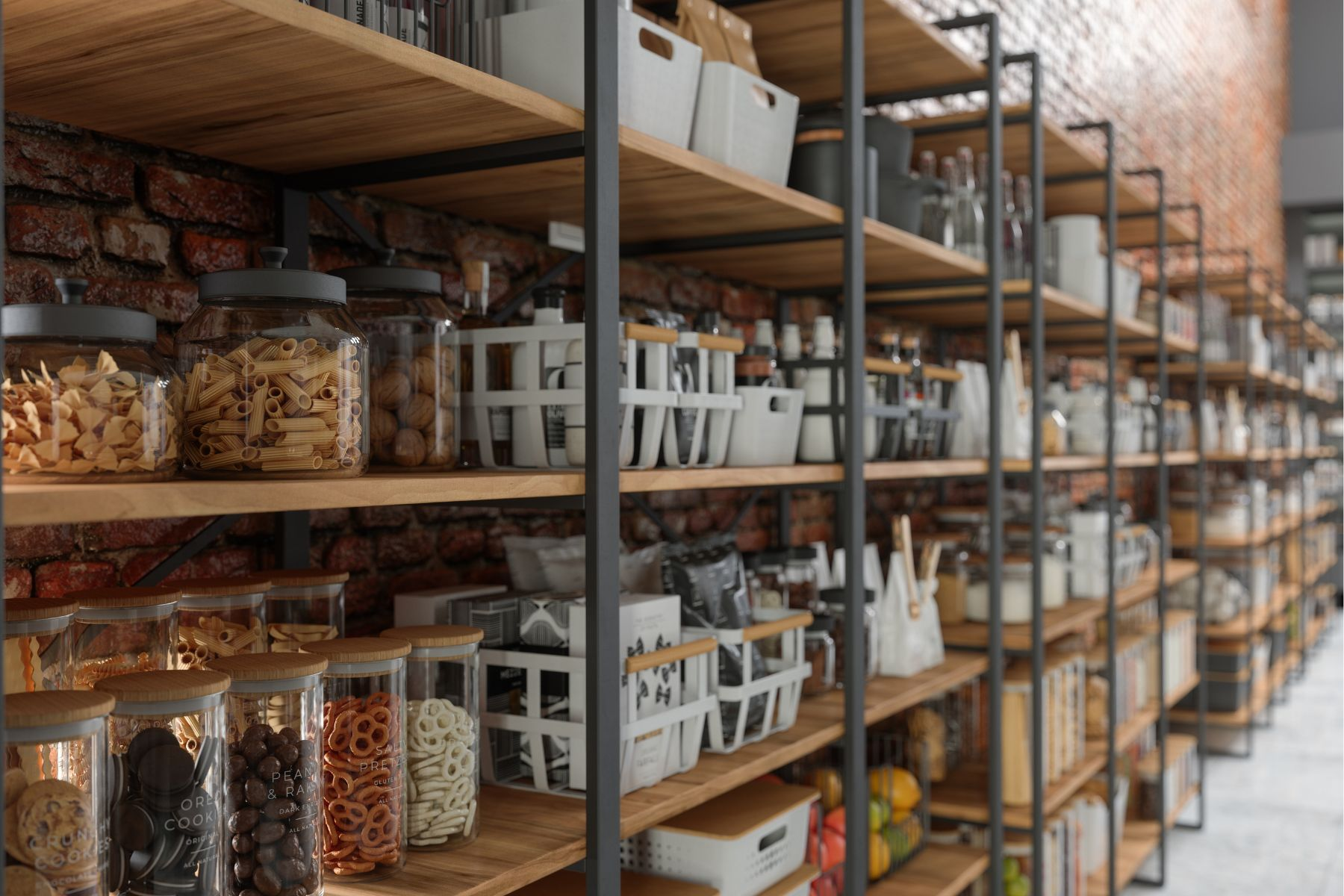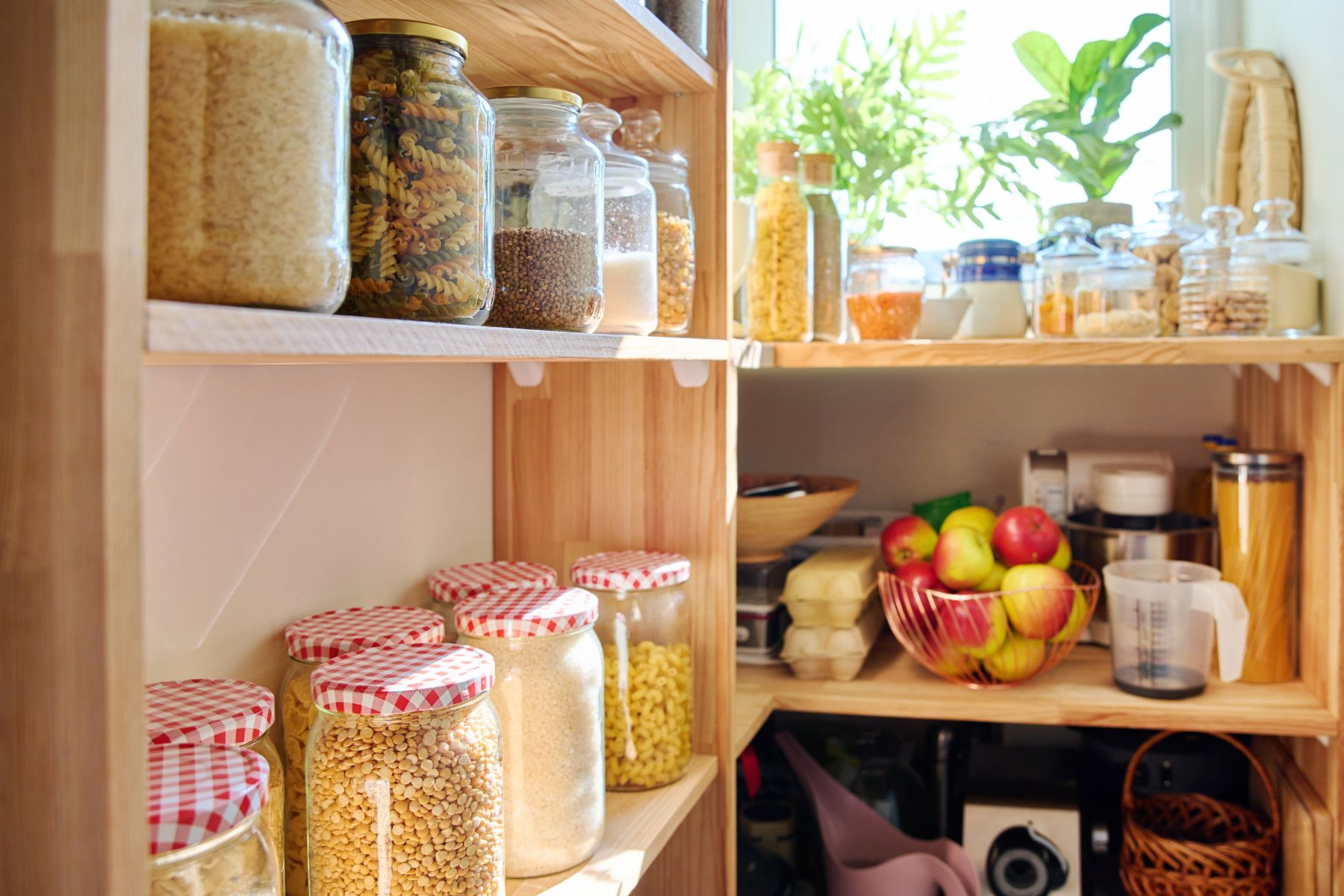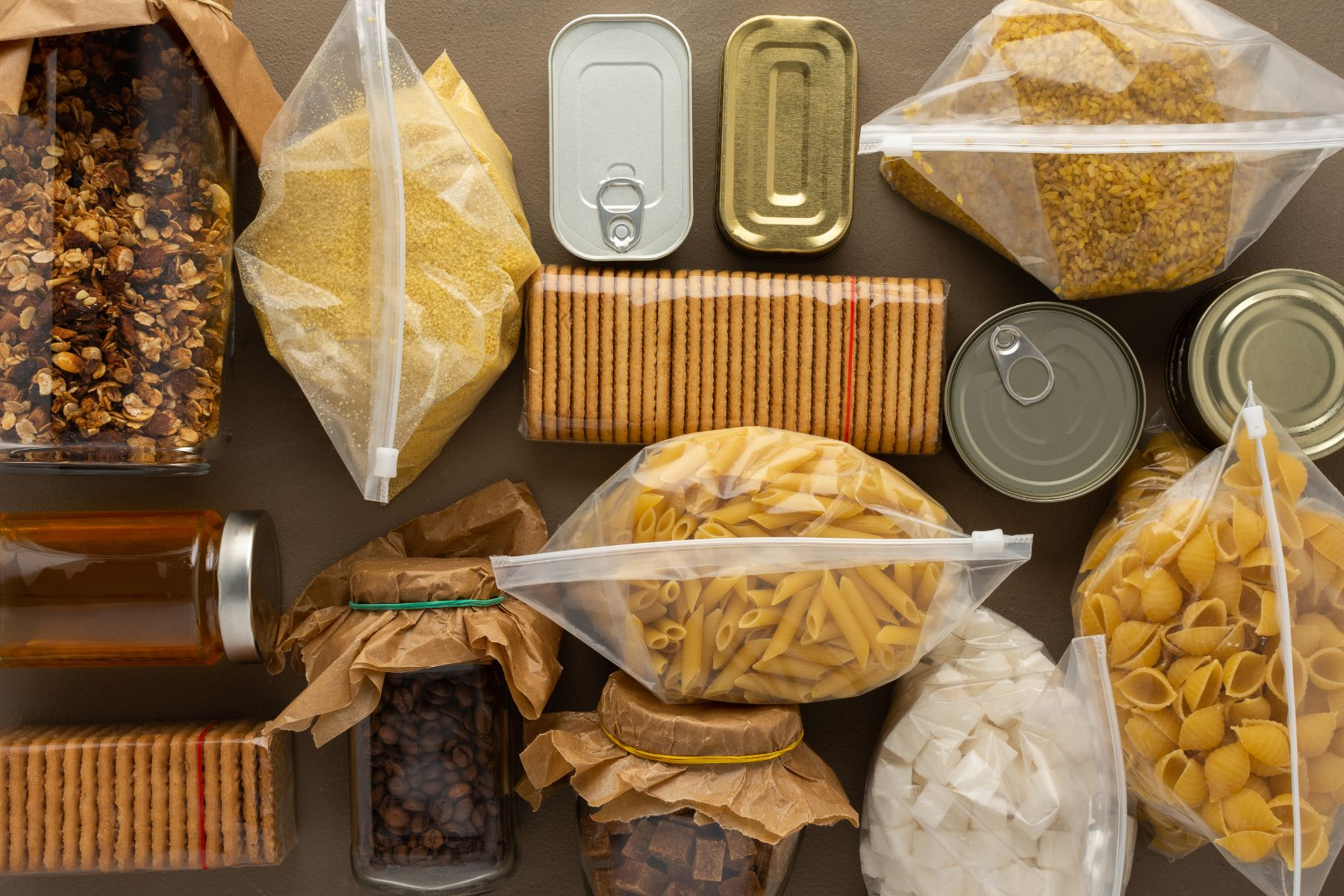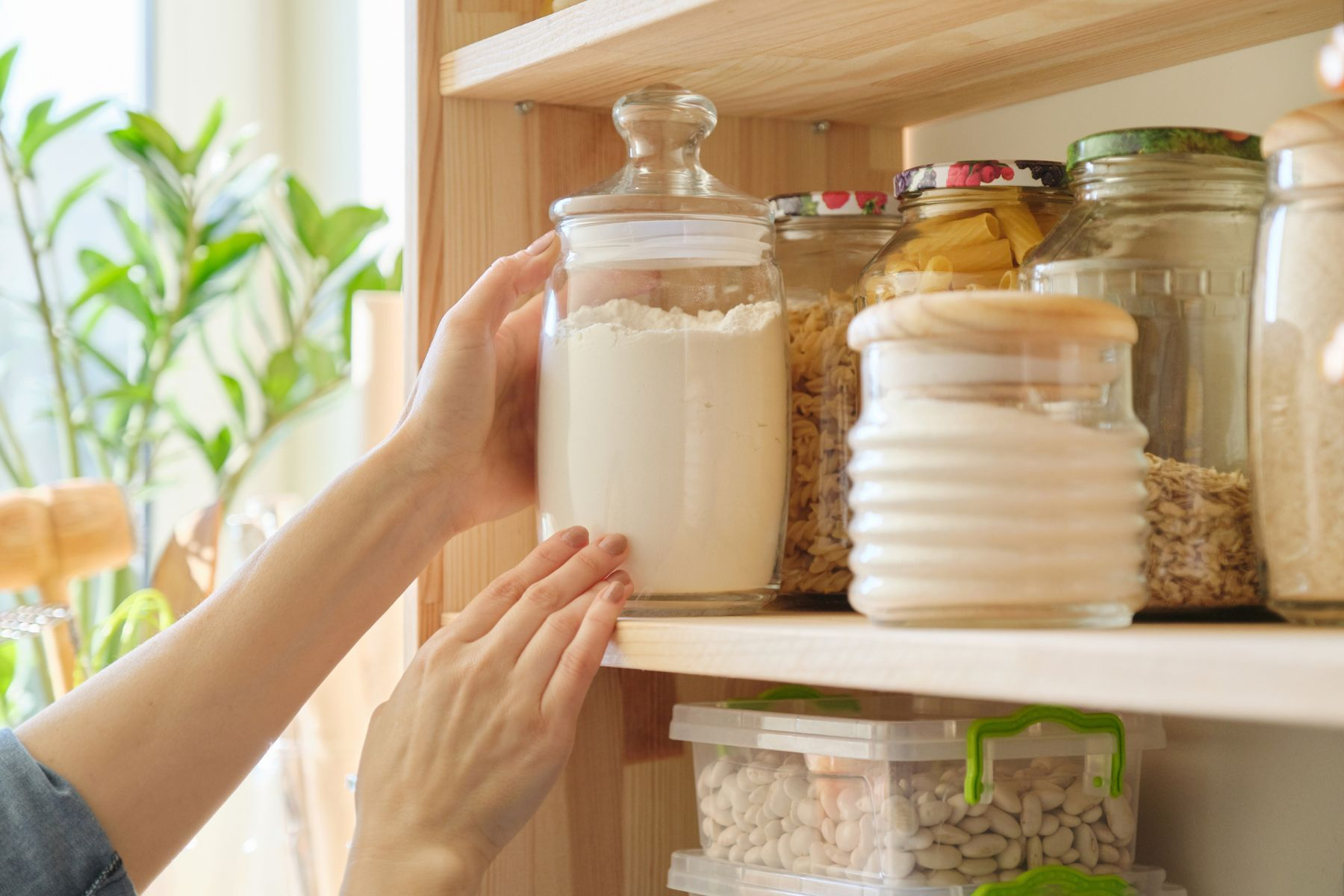Maximize Your Space: Genius Storage Ideas for Small Kitchens
Introduction
In the hustle and bustle of our daily lives, the kitchen serves as a central hub for nourishment and connection. However, small kitchens often pose a unique challenge when it comes to storage. Fear not! This comprehensive guide is here to unlock the secrets of maximizing space in your small kitchen with genius storage ideas. From maintaining food safety to long-term storage solutions, we've got you covered.
Food Safety and Storage Basics
Small kitchen spaces demand creative storage solutions to not only maximize space but also ensure the safety and longevity of stored items. Let's delve into the essential aspects of food safety and storage basics tailored for compact kitchens.

food storage areas
In the confined quarters of a small kitchen, ingenious storage ideas become paramount. Vertical storage becomes your ally—consider installing shelves or cabinets that reach the ceiling, utilizing every inch of available space. Additionally, invest in under-cabinet organizers and pull-out shelves to make the most of tight spaces. This strategic approach to storage not only creates a more organized kitchen but also facilitates easy access to frequently used items.
Understanding the Temperature Danger Zone
Food safety hinges on understanding and managing the temperature danger zone, where bacteria flourish. Keep perishable foods, especially raw meats and dairy, below 40°F (4°C) to impede bacterial growth. On the other end of the spectrum, hot foods should be maintained at temperatures above 140°F (60°C). By staying within this range, you significantly reduce the risk of foodborne illnesses, ensuring the safety of your stored food.
Special Care for High-Risk Foods
Certain foods are more prone to contamination, requiring special care in storage. Raw meats, in particular, pose a higher risk. When storing raw and cooked foods in the same refrigerator, take measures to prevent cross-contamination. Designate specific storage areas and use separate containers for raw meats. This simple yet effective step adds an extra layer of protection against potential foodborne pathogens.
In small kitchens, where space is a premium, it's crucial to adopt these storage practices diligently. By implementing these genius storage ideas, you not only organize your kitchen efficiently but also enhance the safety of your stored food.
Refrigeration and Freezing Techniques
Efficient refrigeration and freezing techniques play a pivotal role in small kitchens, where every inch of space matters. Let's explore practical tips for storing both perishable and frozen items, ensuring their safety and maintaining their quality.

Storing Food in the Fridge
In the confined space of a small kitchen, organizing the refrigerator strategically is essential. Consider the layout of your fridge—keep frequently used items at eye level for easy access, placing raw meats on the bottom shelf to prevent any potential drips onto other foods. Utilize clear containers to store leftovers, making it easy to identify contents without unnecessary opening and closing, which can impact the internal temperature.
Freezing Food Safely
Frozen foods are a lifesaver in small kitchens, offering convenience and extending the shelf life of various items. Invest in quality airtight containers or freezer bags to prevent freezer burn, preserving the texture and flavor of your frozen goods. Label items with the date before freezing to implement a systematic rotation, ensuring older items are used first and reducing unnecessary waste.
Avoiding Refreezing Thawed Food
Once thawed, it's crucial to exercise caution and refrain from refreezing certain items. This is especially true for items like meats, where the freeze-thaw cycle can compromise both taste and texture. Plan your meals to incorporate thawed items promptly, minimizing the risk of nutrient loss and maintaining the overall quality of your stored food.
In the realm of small kitchens, where optimizing space is key, these refrigeration and freezing techniques not only ensure the safety of your stored food but also contribute to the overall efficiency of your kitchen. By implementing these strategies, you'll find that your small kitchen can efficiently accommodate both perishable and frozen items, making meal preparation a seamless and enjoyable experience.
Smart Storage Solutions
In the quest for genius storage ideas tailored to small kitchens, it's essential to explore innovative solutions that not only maximize space but also prioritize food safety and organization. Let's delve into smart storage solutions designed to transform your compact kitchen into a functional and efficient space.

Separating Raw and Cooked Food
One of the fundamental principles of smart storage in small kitchens is the separation of raw and cooked foods. By designating specific storage areas for each, you mitigate the risk of cross-contamination and ensure the safety of your meals. Color-coded containers or labels can further streamline this process, making it easy to distinguish between raw and cooked items in limited kitchen space.
Choosing Non-Toxic Food Storage Containers
Selecting the right storage containers is crucial for maintaining both the safety and freshness of your stored food. Opt for containers made from strong and non-toxic materials, whether it's glass or plastic. Tight-fitting lids are a must, preventing air exposure that can lead to premature spoilage. This choice not only enhances the longevity of your food but also aligns with safety standards in small kitchen storage.
In Doubt? Throw it Out!
While maximizing space is a priority, it's equally important to prioritize food safety. When in doubt about the freshness or safety of a stored item, adhere to the golden rule: when in doubt, throw it out. Discarding questionable items may seem wasteful, but it's a small price to pay for ensuring that the food you consume is free from any potential risks of spoilage or contamination.
In the realm of small kitchen storage, these smart solutions not only promote organization and efficiency but also contribute to the overall safety of your stored food. By adopting these practices, you'll find that your compact kitchen can indeed accommodate a wide array of items without compromising on safety or accessibility.
Domestic Food Storage Strategies
Efficient domestic food storage is a cornerstone of maintaining a well-organized and safe kitchen space, especially in smaller kitchens where every inch matters. Let's delve into practical strategies and safety measures for storing a variety of foods at home.

Safety Measures in Food Storage
Creating a safe environment for your stored food begins with adhering to fundamental safety measures. Regularly inspect your storage areas, whether it's the pantry or refrigerator, to ensure cleanliness and order. Implement a first-in, first-out (FIFO) system to rotate your stored items, minimizing the risk of consuming expired goods.
Dry Storage of Foods
Dry goods, including grains, spices, and herbs, are staples in any kitchen. In small kitchens, strategic dry storage becomes crucial. Invest in airtight containers to shield these items from moisture and pests, extending their shelf life. Labeling containers with expiration dates adds an extra layer of organization and ensures you use older items first.
Effective Food Rotation Techniques
In a small kitchen, optimizing the use of space requires diligent food rotation. Implementing a systematic rotation strategy, such as the FIFO method, ensures that older items are used first, reducing waste and keeping your stored foods at their freshest. This practice is particularly relevant for perishable items and those with shorter shelf lives.
These domestic food storage strategies not only contribute to the organization of your small kitchen but also enhance the safety and longevity of your stored items. By embracing these practices, you'll find that even in limited space, your kitchen can efficiently accommodate a variety of foods without compromising on safety or freshness.
Emergency Food Supply and Long-Term Storage
In today's uncertain world, having a well-prepared emergency food supply is not just a precaution but a necessity. Small kitchens, often challenged by limited space, can still play a pivotal role in securing a reliable long-term food storage plan. Let's explore strategies for building an emergency food supply and ensuring the longevity of stored items.

Building a Bulk Staples Reserve
The foundation of any robust emergency food supply is a bulk staples reserve. Stock up on non-perishable items such as canned goods, dried fruits, and grains. These staples serve as the backbone of your emergency food reserve, offering sustenance during unforeseen circumstances. Ensure to rotate these items periodically, using the oldest ones first to maintain freshness.
Supplementing Bulk Staples
While bulk staples provide essential sustenance, supplementing your emergency food supply with additional items is prudent. Consider including non-fat dry milk, baby foods, and vitamin supplements to cater to diverse nutritional needs. Be mindful of the shelf life of unopened items, regularly checking expiration dates to guarantee their efficacy in times of need.
Understanding Shelf Life
A key aspect of successful long-term storage is understanding the shelf life of your stored items. Canned goods, for instance, can remain safe to consume for an extended period, but checking for any signs of damage or expiration is crucial. Regularly rotate items and update your emergency food supply to ensure that you always have access to fresh and viable options.
These strategies for emergency food supply and long-term storage empower small kitchens to be hubs of preparedness. By establishing a well-thought-out reserve of essentials and supplementing it wisely, you not only maximize your kitchen space but also create a reliable source of sustenance in times of need. Whether it's a sudden power outage or a more prolonged emergency, these preparations ensure that you and your loved ones are well taken care of.
The Significance of Proper Food Storage
Proper food storage is not just a matter of convenience; it is a fundamental aspect of maintaining the nutritional integrity, safety, and overall quality of your food. In this section, we'll delve into the profound significance of ensuring that your stored items are appropriately handled and stored, particularly in the context of small kitchens.

Why Proper Food Storage Matters
Beyond the apparent need for keeping a tidy kitchen, the significance of proper food storage extends to the very heart of your well-being. When foods are stored correctly, their nutritional value is preserved, ensuring that you receive the maximum benefits from the items you consume. This is especially crucial in small kitchens where space constraints demand strategic planning – every food item should contribute to your overall health.
Types of Foods and Their Storage Needs
Understanding the types of foods and their specific storage requirements is paramount. Perishable foods, including meats and dairy, demand refrigeration to inhibit bacterial growth. Semi-perishable items like eggs and some fruits can be stored at room temperature for shorter periods. Staple or non-perishable foods, such as dry goods, can be stored for more extended periods in suitable conditions.
Factors Affecting Food Storage Life
Several factors influence the shelf life of stored foods. Temperature, humidity, and exposure to light can either extend or expedite the deterioration of your items. In a small kitchen, where space is limited, it becomes even more critical to be mindful of these factors to ensure that every inch of storage contributes to preserving the longevity and quality of your food.
Proper food storage is not just a practical consideration; it's a commitment to your health and the well-being of those you care about. By recognizing the significance of correct storage, you empower your small kitchen to become a hub of not just culinary creativity but also a sanctuary of health and vitality. Through strategic planning and adherence to best practices, you transform your kitchen into a space where every stored item contributes to a wholesome and nourishing lifestyle.
Exploring Different Food Preservation Methods
As we navigate the landscape of small kitchens, where optimizing space is a constant challenge, exploring diverse food preservation methods becomes a game-changer. In this section, we'll unravel the pros and cons of various techniques, offering insights into the art of preserving food for both practicality and flavor enhancement.

Pros and Cons of 6 Ways to Store Food
-
Canning
Risks & Downsides of Canning
Canning is a classic preservation method with its set of advantages and considerations. While it effectively extends the shelf life of foods, there are risks, particularly related to the potential for bacterial contamination if not done correctly. Ensure meticulous hygiene and follow trusted canning guidelines to mitigate these risks.
-
Freezing
Freezing stands out as a versatile and widely-used preservation method. It maintains the nutritional value and texture of foods, making it a popular choice for small kitchens. However, freezing can lead to textural changes in some fruits and vegetables, and freezer burn is a concern if items are not properly sealed.
-
Drying or Dehydration
Drying or dehydration is a traditional method that concentrates flavors and extends shelf life. It's ideal for fruits, vegetables, and herbs. One caveat is the potential loss of some nutrients during the drying process. However, the compact size of dried goods makes them ideal for storage in limited kitchen spaces.
-
Fermentation
A Note About Mold
Fermentation not only preserves but enhances flavors and introduces beneficial bacteria for gut health. However, there's a note of caution – the growth of mold is a potential downside. Understanding the fermentation process and maintaining cleanliness is crucial to reap the benefits without encountering issues.
-
Pickling
Pickling is a fantastic way to add a burst of flavor to various foods. The high acidity in pickled items acts as a natural preservative. However, the high salt content is a consideration, especially for those monitoring their sodium intake. Moderation and choosing low-sodium options can mitigate this concern.
-
Cold Storage
Other Things to Keep in Mind with Cold Storage
Cold storage involves keeping items in a cool environment without freezing. While it's suitable for certain fruits and vegetables, some items, like potatoes, should be kept in a dry, dark place. Balancing the temperature and humidity in your small kitchen becomes crucial to optimize cold storage effectiveness.
These various food preservation methods offer a spectrum of choices for small kitchen dwellers. By understanding the pros and cons of each technique, you can tailor your preservation approach to suit your kitchen's limitations while delighting in the enhanced flavors and extended shelf life of your stored foods.
Conclusion
In the realm of small kitchen mastery, strategic storage is the key to both efficiency and health. From maximizing space to exploring diverse preservation methods, your kitchen transforms into a haven of creativity and preparedness. Remember, in a small kitchen, every stored item tells a story—of culinary prowess, thoughtful organization, and a commitment to well-being. May your kitchen continue to be a space where creativity flourishes, and every stored ingredient adds to the symphony of delightful meals. Happy cooking!


